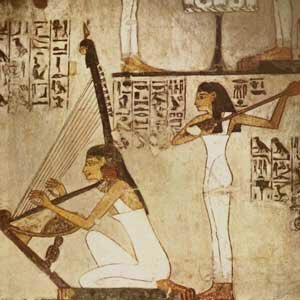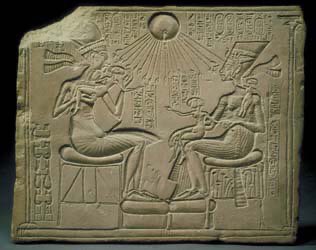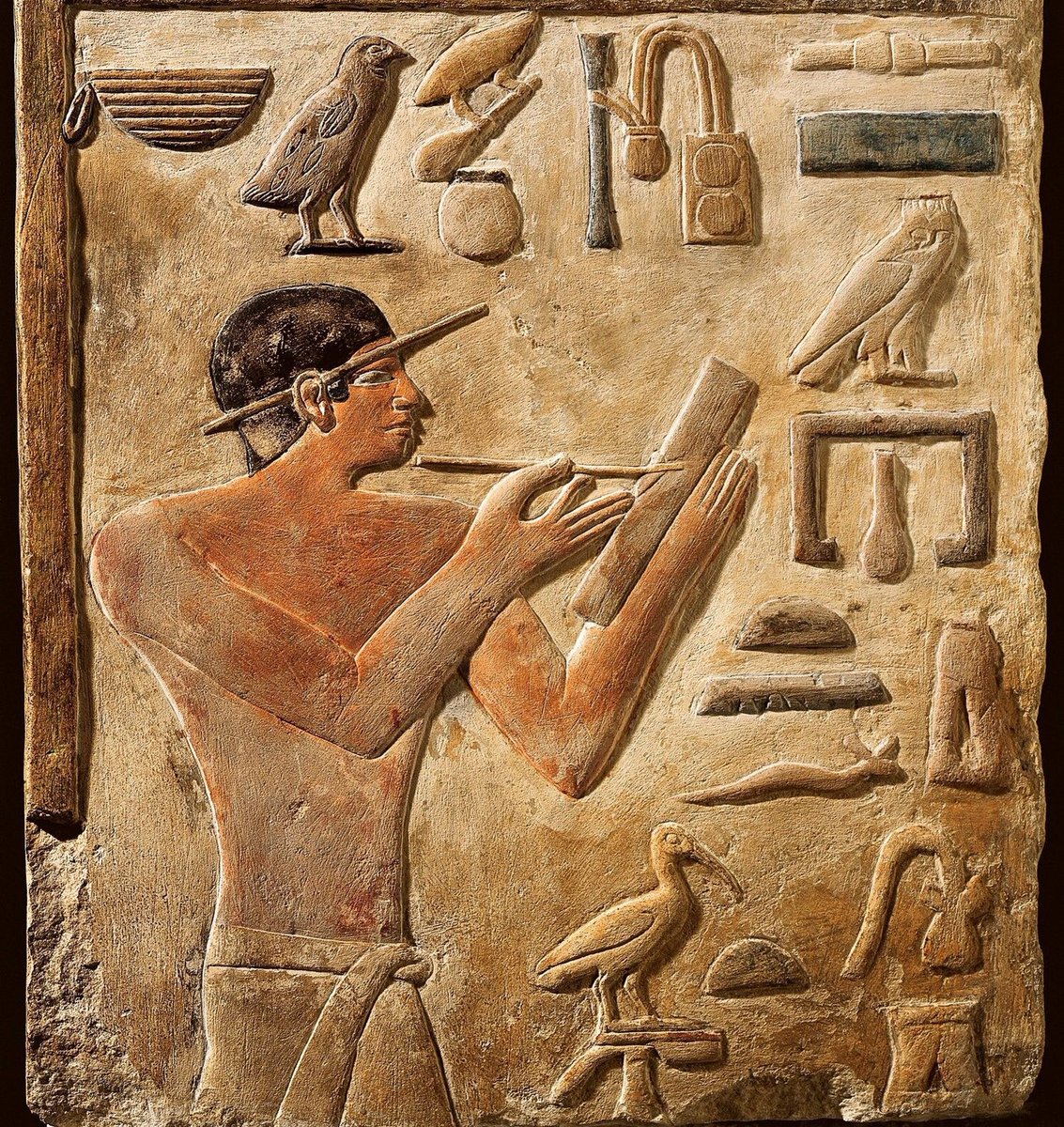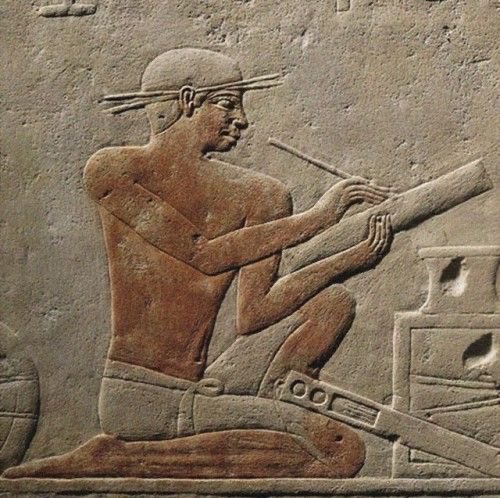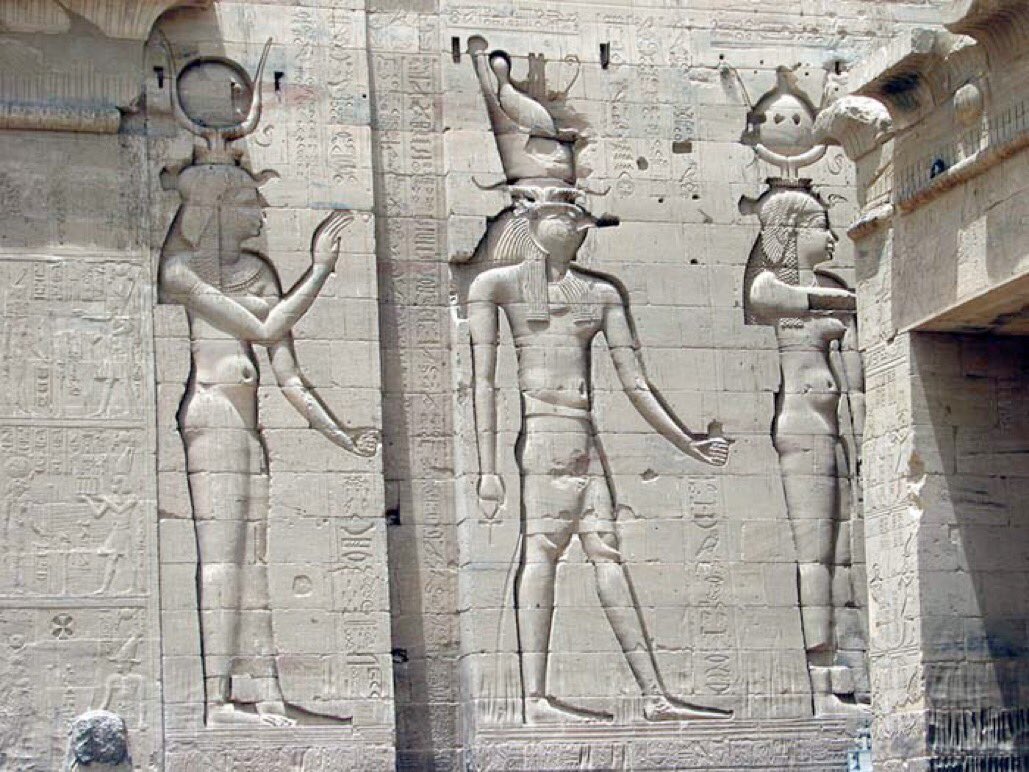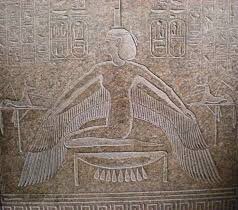Archaeological evidence shows that education in ancient Egypt was similar to modern education. Images show children seated, and the instructor seated at front in a large desk. In Anc. Egypt mostly boys received a formal education, while girls were taught at home by their mothers.
Mothers were responsible for educating the children, boys and girls, until the boys reached 4 years of age. Then, boys began to receive tutelage from their father. Few career options were available to women, the majority of women stayed home and tended the children and the home.
Respect for parents, particularly for mothers, was stressed and there was a strong emphasis on manners, morals, and hard work. Slothfulness and disrespect earned harsh punishments. At 7 years of age, boys began their formal education with books, called Kemty, written vertically.
At the age of 14, the middle and lower class boys left their formal education to work as apprentices to their fathers. This applied to farmers, stone masons and carpenters; all the craftsmen expected their sons to learn the trade. Upward mobility between the classes was rare.
Young girls were taught by their mothers the skills of child rearing, house running, cooking, baking and simple medical skills, like the use of herbs and oils. Girls of higher birth were instructed on supervising servants and slaves, and entertaining high-ranking visitors.
Most Egyptian girls were educated at home by their mothers and their career expectations were to be a wife and mother. High-born girls could be afforded additional education, but like their lower-born counterparts, their careers were limited.
Upper class women had more formal education so they could read, write, and cipher. Knowledge of politics, history, and arts were included in their education for two reasons: to be able to tend to the family business if needed, and to be an acceptable wife for an upper class man.
One of the few career choices that would enable upward mobility, was successfully apprenticing to a scribe, this could enable a boy to achieve a higher station in life. Girls were not usually permitted to become scribes, although there were exceptions.
History documents a few female doctors in ancient Egypt, they were also trained as scribes so they could understand medical texts as well as document the treatments rendered. Scribes were the historians of the time and recorded historical events as well as more mundane events.
Religious education was included with the other subjects. Children were taught respect and honor to the gods from the time they were very young, and disobedience and disrespect incurred harsh punishments.
The ancient Egyptians were polytheists, except during Akhenaten’s empire.
The ancient Egyptians were polytheists, except during Akhenaten’s empire.
The Prince& #39;s School was for the king& #39;s, nobility’s or high officials’ sons; no girls were allowed. Young boys who were extremely promising were allowed to attend also, and this was a great honor. It was also a way for members of the lower class to rise above their birth station.
Young students were trained in math and writing. Older students were trained in reading, history, science, medicine, music, writing and math-based on a decimal system and included arithmetic, astronomy & geometry. Punishments for misbehaving ranged from writing lines to beatings.
Ancient Egyptians believed that wisdom came by obeying the natural laws that governed everyday life; wisdom was a result of adhering to justice, integrity, and truth. Therefore, students were taught the precepts of justice, integrity, and truth so that they could acquire wisdom.

 Read on Twitter
Read on Twitter


